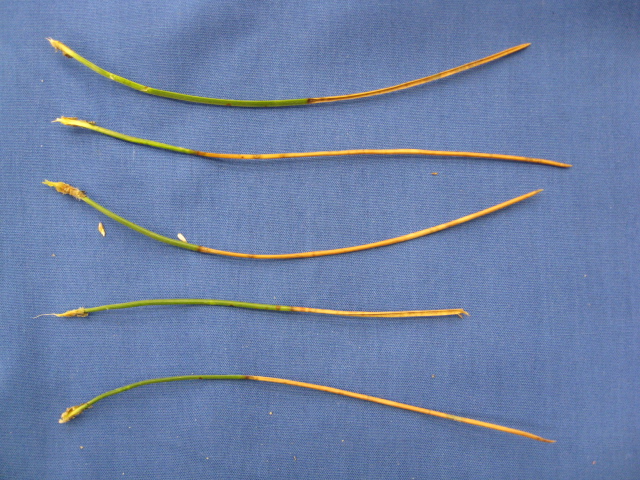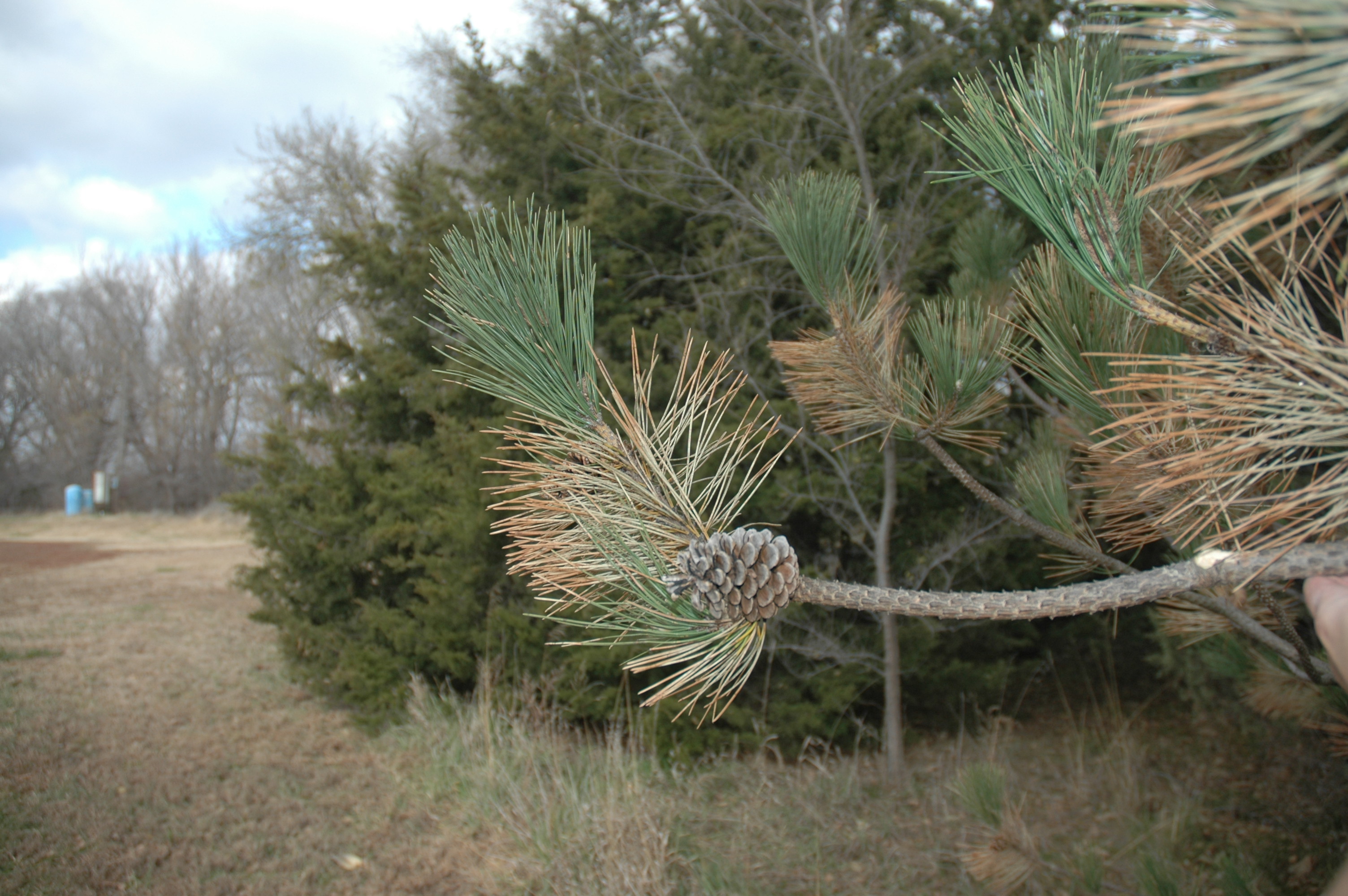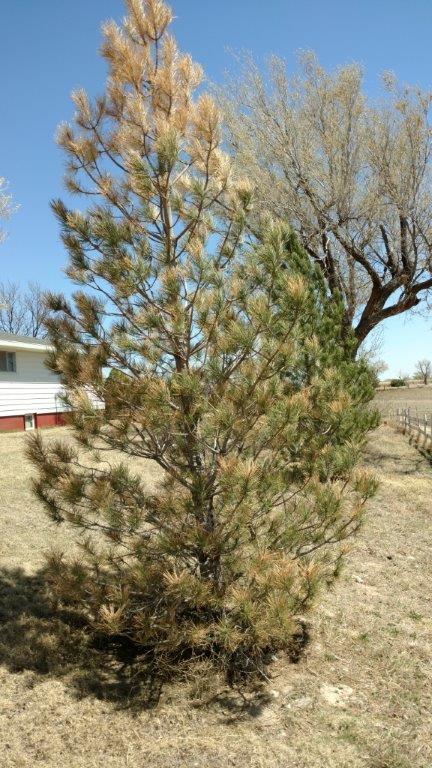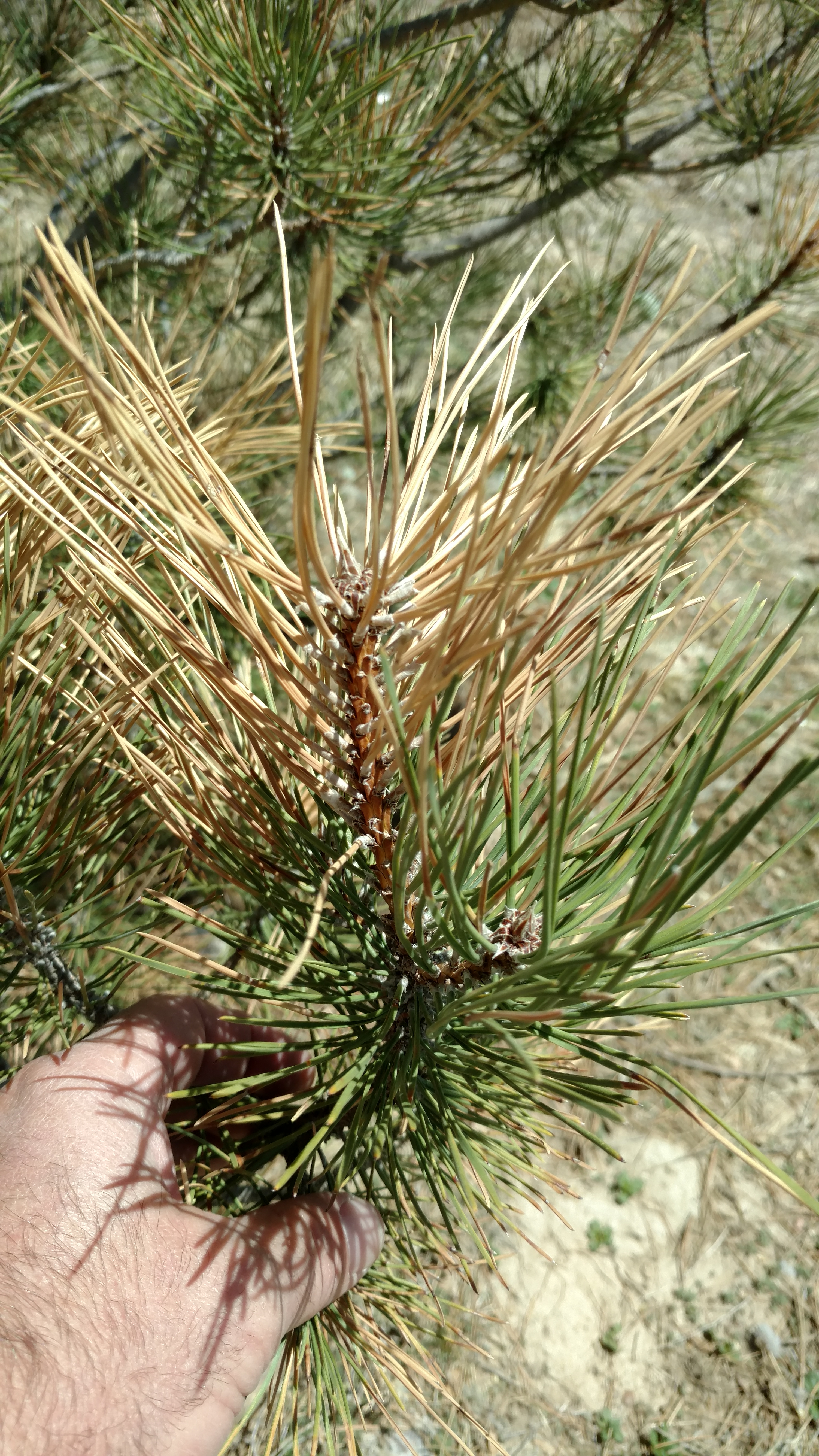We recently posted about pine wilt and pine tip blight. To round out the big three pine diseases, below are a few quick notes about Dothistroma needle blight. For a review of all three of these diseases, plus natural needle drop, you can check out Pine Diseases of Kansas. (Click that link to download a free pdf with lots of photos and management information.)
Dothistroma needle blight is common in Austrian and Ponderosa pine. It can occur on Mugo pine, too.
Dothistroma spends the winter in infected needles. During wet conditions in late spring/early summer the fungus infects new needles.
Here is a photo of the fungal fruiting structure – the little black lump peeking out from under a flap of needle tissue:
We have been seeing those in the past couple of months on needles that were infected last year. December through April is when those fruiting bodies start to pop, allowing us to make a diagnosis.
Those fruiting structures produce spores that spread in rain to infect new needles. This often occurs during wet, mild weather in late spring, early summer (but can occur all summer). Those needles eventually show a partial needle scorch, with the base staying green. Each needle is a little different, depending on where the fungus got in there. The photo below shows some needle spots and banding and then the browning (necrosis) from the infection point outward.
On a tree, this shows up as partial browning, then complete browning, of the needles one year back on the branch:
The older, needles eventually drop off, leaving just a one-year tuft of the newest needles. The branch looks like a broomstick or a lion’s tail:
The damage tends to start in the lower part of the tree and work its way up. The disease is more likely in older trees. Mature, overcrowded windbreak trees are susceptible. Normally, pines keep several years of needles. If all those inner needles drop the tree has less capacity to do photosynthesis and it can weaken. Each little needle is like a solar panel, and fewer solar panels means less energy.
What do you think about this tree?
It is a young tree, and the damage is more top-down, not bottom up. So the overall pattern does not seem right for Dothistroma. Remember – with Dothistroma the disease usually starts at the lower part and works up, with older trees more prone to the disease.
Let’s take a closer look. What do you see? Or NOT see?
The damage is pretty uniform, with each needle looking quite similar. Compare it to that photo farther up where each needle is a little different. Plus, there is no spotting/banding. My guess is this is environmental stress. Pines can definitely get the moisture sucked right out of them during dry winter winds.
To know for sure, samples can be submitted to our Plant Disease Clinic either directly or (even better) through your local K-State Research and Extension Office.
Need more details? Remember our publication about Pine Diseases in Kansas where you can find more information about diagnosing and managing Dothistroma and the other pine diseases.






